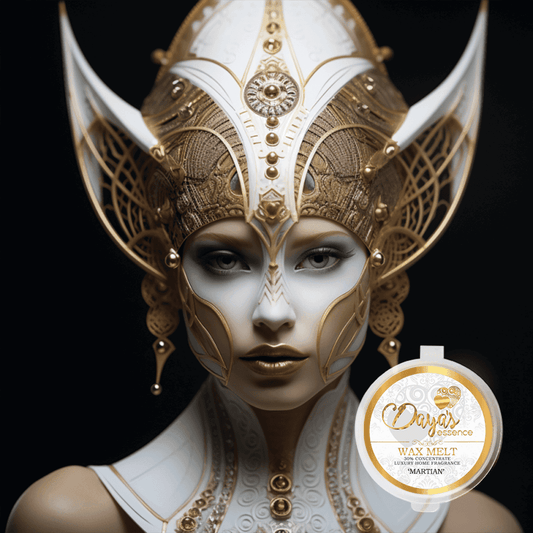Scent Sensitivity and Wax Melts: Wax Melt Scents
Ever felt a pang of dread when a friend complains about your beloved wax melt giving them a headache?

You know that gorgeous scent you love? The one that makes you feel like you're strolling through a spring garden or relaxing on a tropical beach?
Well, for some people, that same scent might trigger a full-blown migraine. It's a real bummer, but it's also surprisingly common issue – one in three people actually suffer from scent-related headaches.
But don't worry, there's no need to ditch your wax melts just yet!
The Fragrance Headache Connection: Why My Nose Loves It, But Yours Doesn't
Ever noticed how some folks go bonkers for blue cheese, while others recoil in disgust? Fragrance is a bit like that too.
Some people are simply more sensitive to certain scents than others. It's not just about the strength of the fragrance either. Even a subtle whiff of something can trigger a reaction if it contains a pesky ingredient that your nose doesn't like. Scientists reckon this sensitivity might be due to blood vessels in the brain reacting to certain aromas. These vessels can dilate and swell, irritating the areas responsible for headaches and pain.
This is called olfactory-induced headaches.
 This means there's no one-size-fits-all solution when it comes to fragrances. Everyone's different, and what smells lush to you might be a migraine trigger for someone else its all thanks to the unique blend of chemicals in each fragrance oil.
This means there's no one-size-fits-all solution when it comes to fragrances. Everyone's different, and what smells lush to you might be a migraine trigger for someone else its all thanks to the unique blend of chemicals in each fragrance oil.
Common Culprits: Fragrance Chemicals to Watch Out For
So, how do you navigate this fragrant maze? It's all about becoming a scent detective! That's where CLP (Classification, Labelling, and Packaging) information comes in handy. It's like a wax melt's ingredient list and can help you identify potential culprits.
 Common fragrance chemicals known to trigger sensitivities include:
Common fragrance chemicals known to trigger sensitivities include:
| Common Fragrance Chemicals |
|---|
| Citral (found in citrus scents) |
| Limonene (also in citrus) |
| Linalool (found in lavender and other florals) |
| Geraniol (found in rose and citrus) |
| Eugenol (found in cinnamon and clove) |
However, remember that the CLP only lists chemicals that are considered allergens at high concentrations. The headache culprit could be a combination of chemicals, or even a compound not listed on the CLP. If you need more information, don't hesitate to ask for the Safety Data Sheet (SDS) – it's like the fragrance's full biography!

Dayas Essence: Committed to Your Safety and Enjoyment.
At Dayas Essence, your safety and enjoyment is my top priority. I carefully select high-quality fragrance oils and strive to use the least possible sensitisers. While some scents may contain a small number of these potential triggers, it's often necessary to create the desired aroma. Remember, every fragrance oil is unique. It's all about finding what works for your nose!

Headache-Free Fragrance: Tips and Tricks
If you're prone to scent-induced headaches, don't despair! Here are some tips to help you still enjoy your wax melts:
| Tips for Avoiding Headaches |
|---|
| 1. Keep a Scent Diary: Note down any scents that trigger headaches so you can avoid them in the future. |
| 2. Test New Scents Carefully: Try a small amount of new scents in a well-ventilated area before committing to a full melt. |
| 3. Take Breaks: Don't overload your senses! Give your nose (and your head) a rest from time to time. |
| 4. Use less wax: If a scent is too strong, use less wax or try melting it in a larger room. |
| 5. Consider Other Factors: Headaches can be caused by stress, lack of sleep, or even staring at screens for too long. Be mindful of these triggers too. |
| 6. Treat the Symptoms: If you do get a headache, treat it like any other with over-the-counter pain relievers, rest, hydration, and fresh air. |
Migraines & Fragrance: A Complex Relationship
Many factors play a part in triggering a headache, such as stress, lack of sleep, worry, focusing your eyes on screens such as laptops for long period of times, hunger, not drinking enough and maybe your eyes need a checkup, hormones too.
Researchers continue to look for answers regarding why smells may make migraines worse for some sufferers, and doesn’t for other people.
But research remains inconclusive.
A range of smells have been found to be problematic for some migraine sufferers such as:
| Problematic Smells |
|---|
| Soaps, including laundry detergent, hand soap, and dish soap |
| Bath products like shampoo, conditioner, body wash, hair sprays, and cosmetics |
| Household cleaning products |
| Perfumes |
| Air fresheners, scented wax products, deodorizers, and room sprays |
If you suffer from migraines, you know how debilitating they can be. And if you don’t have them… well, it’s probably because you’re lucky.
What is a migraine to those who's never experienced one before…
A migraine is a type of headache that can cause intense throbbing or pulsing in one area of the head. It’s often accompanied by nausea, vomiting, and extreme sensitivity to light and sound or smells. Migraines may happen only occasionally or strike multiple times a month. Some people are unable to perform regular daily activities when having a migraine.
Migraine attacks can cause significant pain for hours to days and be so severe that all you can think about is finding a dark, quiet place to lie down. Some people also experience sensory warning symptoms, including blind spots, tingling in the arms and legs, nausea, and vomiting. Other symptoms of migraines include difficulty speaking or temporary vision loss or blindness.
Migraines can be triggered by many things—light and sound too.

Light sensitivity is also common among migraine sufferers because bright lights can trigger a migraine headache or aura (warning sign).
| Triggers Include: |
|---|
| Flashing or flickering lights like those found on TVs or computer monitors |
| Fluorescent lights |
| Halogen lights |
| Incandescent bulbs |
| Sunlight reflecting |
| Bright reflections on shiny surfaces |

When this happens, your brain is more sensitive to stimuli and therefore more likely to trigger a migraine. That’s why for me (and probably for many people who get migraines), I get migraines if I’m focused on my computer screen or if a storm is brewing plus fluorescent lights too, I've also got astigmatism too.
I know what you’re thinking. “How can the weather cause you to get a migraine?"
It’s just something I have, and there’s nothing I can do about it.” High humidity, rising temperatures and storms causes me to have a migraine, why is this?
This is because of pressure changes in the atmosphere. Pressure changes affect how blood vessels expand and contract in our bodies, which triggers chemical and electrical changes in the brain that irritate nerves and lead to headaches.
Light sensitivity is also common among migraine sufferers because bright lights can trigger a migraine headache or aura (warning sign), I too suffer from this as well.
The most common triggers include flashing or flickering lights like those found on TVs or computer monitors; fluorescent lights; halogen lights; incandescent bulbs; sunlight reflecting; and even looking at bright reflections on shiny surfaces, it’s best not to stare directly into these kinds of light sources if you’re prone to migraines since they’ll intensify your symptoms faster than other types of light sources would do on their own.
Preventing Scent-Related Headaches
The best way to prevent scent-related headaches is to reduce the amount of scents you use as much as possible, but what if you absolutely have to be around strong scents? The best thing to do with using wax melts is to half the amount you use or use a quarter, do so in a well-ventilated area, so that you can reduce your exposure as much as possible.
If all else fails and the headache comes, treat the symptom like you would any other headache. Over-the-counter pain relievers, such as ibuprofen and migraine relief medications, can help alleviate headache symptoms, rest, stay hydrated, eat and get out in the fresh air as much as possible.




